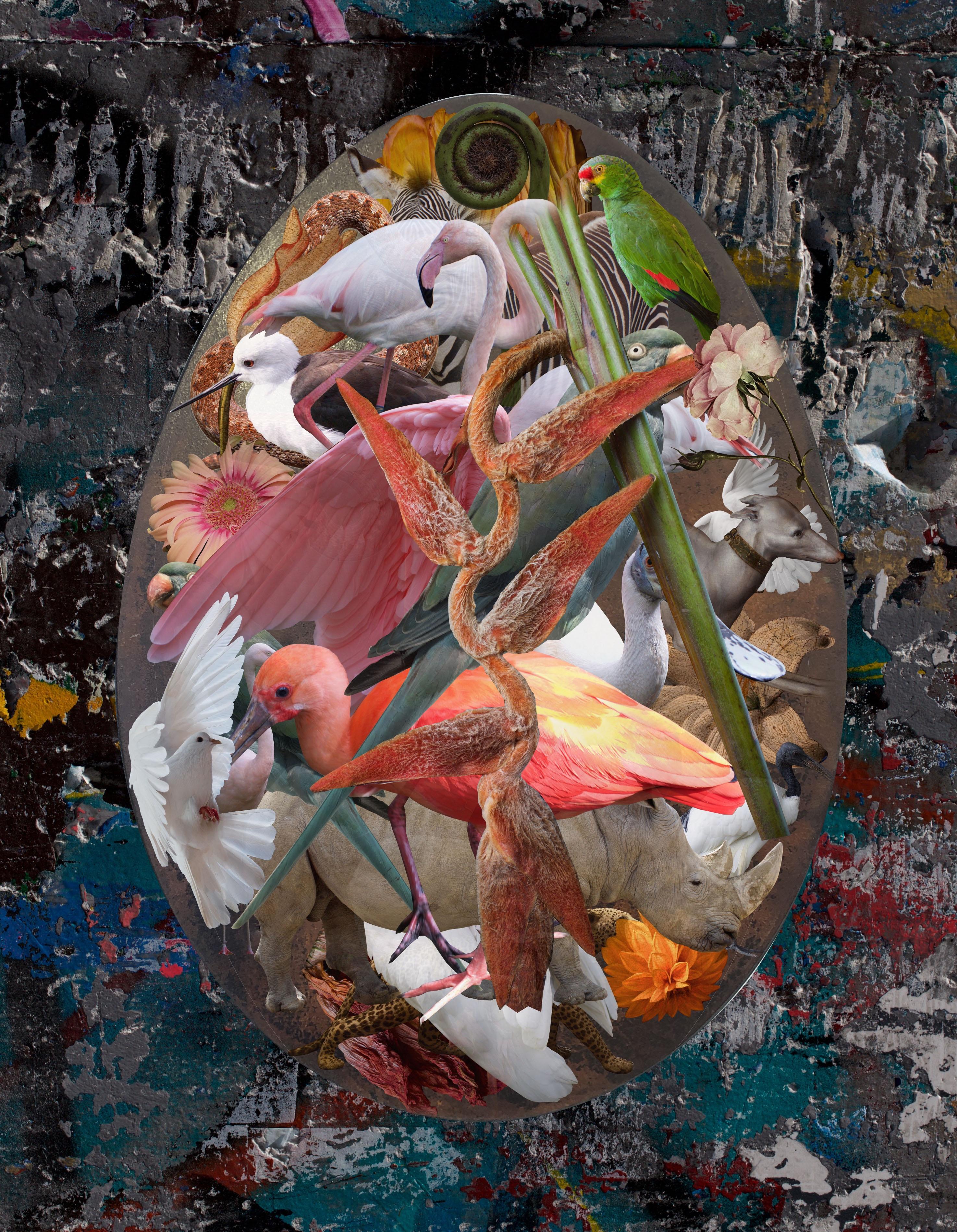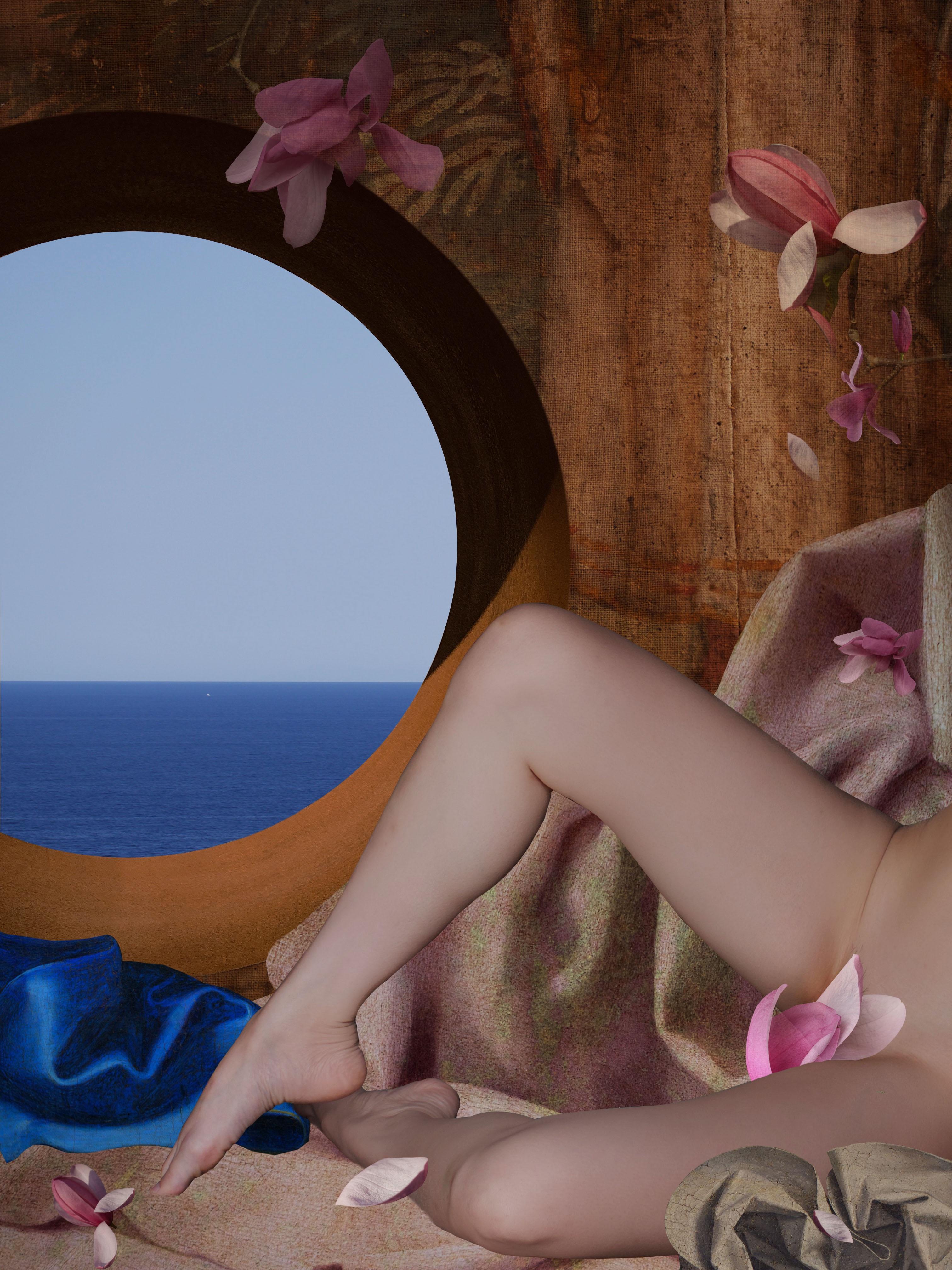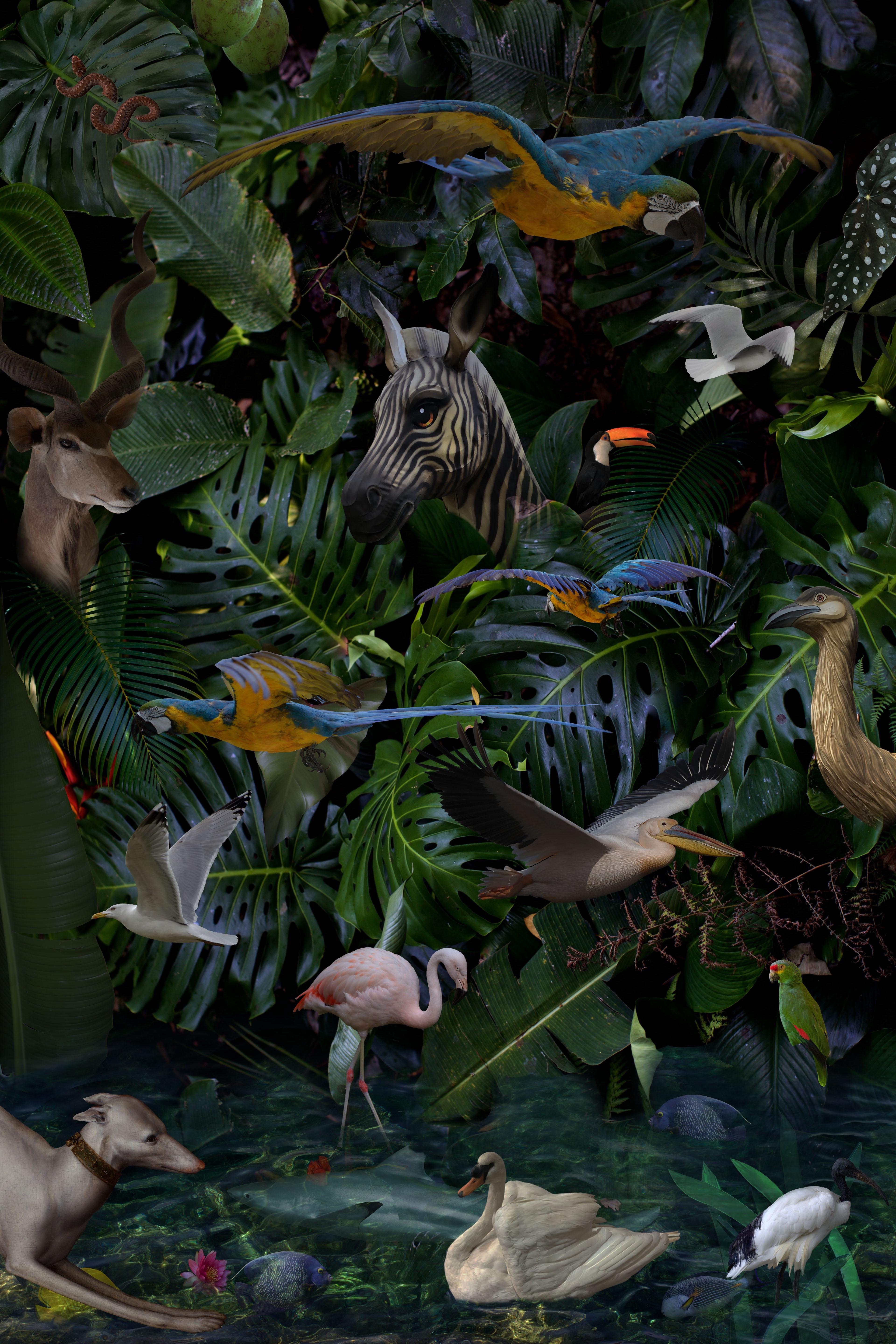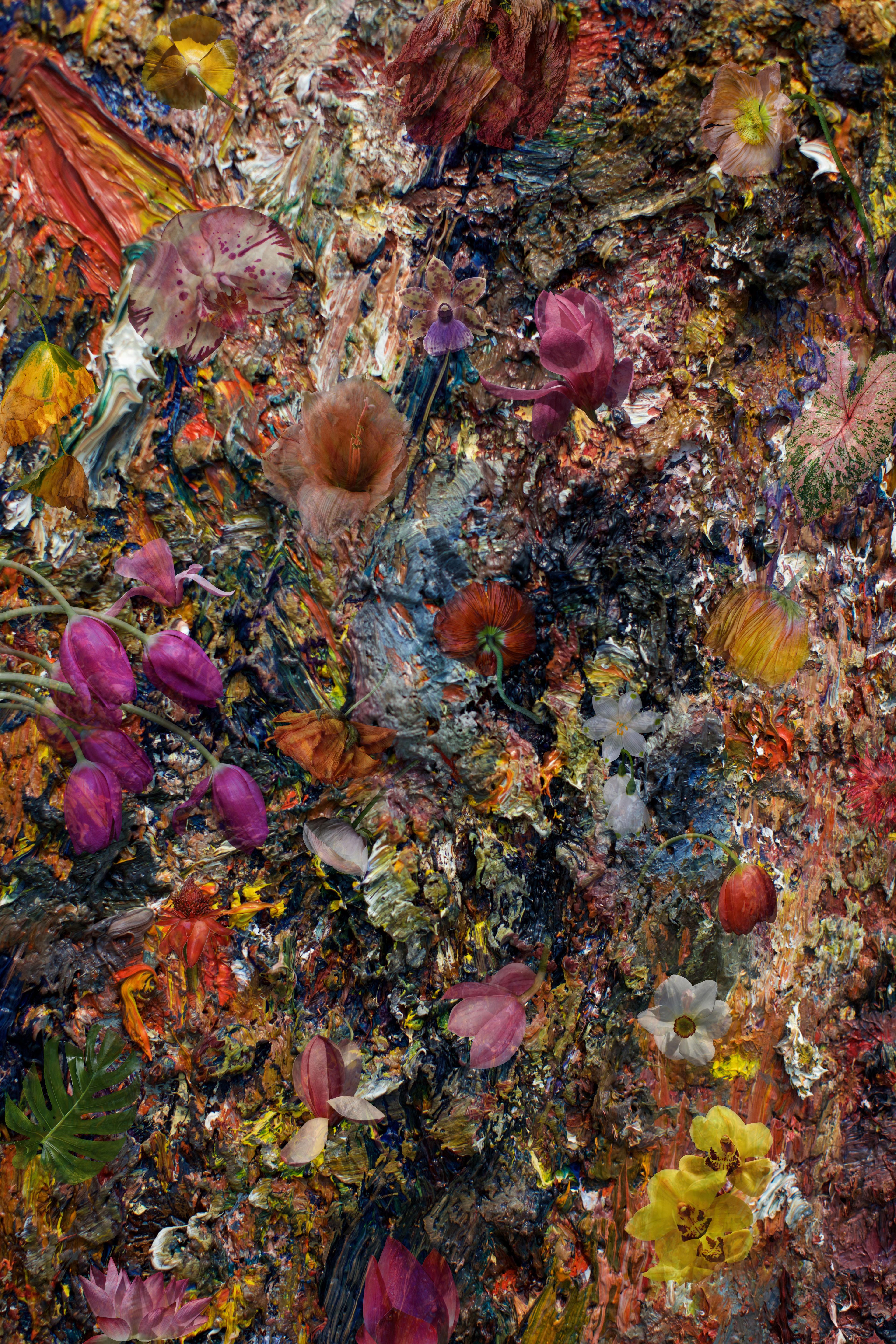Want more images or videos?
Request additional images or videos from the seller
1 of 10
Fernando BayonaOut of the Blue: "At Home"2018
2018
About the Item
Fernando Bayona,
Out of the Blue: "At Home".
Fine Art Inkjet Print
Sizes:
S: 25.6 x 20.8 in. / Ed. 3
M: 41.7 x 33 in. / Ed. 3
L: 53.1 x 41.7 in. / Ed. 2 + 1A.P
In out of the blue, the Bayona’s story becomes opaque, placing a singular emphasis on life’s mystery, in the eyes of all inexplicable, and that we will pose before the scene photographed in a disturbing diatribe: Something ends to happen, yet that something is in the mood of the characters. In some of these images, our contaminated look could reach erroneous conclusions, perhaps dark and remote.
-Pedro Alarcón, Curator, Spain.
*Limited editions, certified, signed and numbered. Produced with museum standards.
- Creator:Fernando Bayona (1950, Spanish)
- Creation Year:2018
- Dimensions:Height: 25.6 in (65.03 cm)Width: 20.8 in (52.84 cm)
- More Editions & Sizes:41.7 x 33 in, Edition of 3Price: $4,50053.14 x 41.73 in, Edition of 2 + 1 A.PPrice: $6,000
- Medium:
- Movement & Style:
- Period:
- Condition:
- Gallery Location:Ciudad De México, MX
- Reference Number:1stDibs: LU1842210505882
FERNANDO BAYONA. (Jaén, Spain, 1980) Lives and works in Madrid & Granada. Bachelor in Arts by the University of Granada and a Master in Photography by the Universidad NABA Milán, Itay, amongst other diplomas he is an artist, College professor, keynote speaker and art promoter. Bayona’s oeuvre has been exhibited at Nueva York, Buenos Aires, Bruselas, Berlín, Milán, Roma, Venecia, Osaka, Túnez, trhoughout Spain and Mexico City with ALMANAQUE featuring his work at Material Art Fair, Arco Madrid, arteBA Buenos Aires and Photo London, followed by his solo show “Appearances Apparatus” at ALMANAQUE, curated by the artist and Arturo Delgado, with a text by the preeminent art historian Alberto Ríos de la Rosa. Bayona is recipient of the Manuel Rivera Iniciarte, Propuestas VEGAP, BilbaoArte - Spain, Eberhard y BSI-Switzerland, KabushikiKaisha-Japan, Agencia Magnum & NABA - Italy, Estampa Madrid, Unicaja, Fundación Arena and The SONY World Photography Awards among others.
About the Seller
No Reviews Yet
Vetted Seller
These experienced sellers undergo a comprehensive evaluation by our team of in-house experts.
1stDibs seller since 2022
- ShippingRetrieving quote...Ships From: Ciudad De México, Mexico
- Return PolicyThis item cannot be returned.
More From This SellerView All
- Once Upon a Time: Piel de Asno.Located in Ciudad De México, MXFernando Bayona, Once Upon a Time: "Piel de Asno". Fine Art Inkjet Print Sizes: S: 25.6 x 20.8 in. / Ed. 3 M: 41.7 x 33 in. / Ed. 3 L: 53.1 x 41.7 in. / Ed. 2 + 1A.P "The narrat...Category
21st Century and Contemporary Contemporary Color Photography
MaterialsArchival Pigment, Inkjet
- HUICHOL: MOUNTAIN, DESERT, NEW YORK (`95-`21). Limited edition of 5.By PABLO ORTIZ-MONASTERIOLocated in Ciudad De México, MXDocumentary Photograph. Contemporary Inkjet on cotton. Limited edition of 5. Signed front and verso. Framed in lacquered black frame with spacer) The first person to photograph the Huichol in their remote communities in the inaccessible canyons of the Western Sierra Madre was probably the Norwegian anthropologist, Carl Lumholtz. He ventured into their territory in 1895, shortly before the arrival of the French naturalist and ethnographer Léon Diguet, who was also a photographer. Like so many who were engaged with documenting Indigenous peoples across the Americas in those brutal years of expansion and settlement, Lumholtz believed that the disappearance of his subjects was inevitable: “the weaker must succumb to the stronger, and the Indians will ultimately all become Mexicans.” The photographs of the Huichol by Pablo Ortiz Monasterio—taken on some twenty trips over the past three decades—prove that Lumholtz was fortunately, terribly wrong. They reveal abundant evidence of cultural survival (what the Huichol call “la costumbre”), made possible by their extraordinary resistance to the religious, nationalist, and economic forces that have long assaulted—and that continue to assault—Indigenous communities everywhere. Though Ortiz Monasterio is also an outsider, he does not operate—like Lumholtz or Diguet—as an old-fashioned preservationist, nor is he confident in the superiority of Western culture, nor is his work only destined for museum vitrines...Category
1990s Contemporary Color Photography
MaterialsArchival Pigment, Inkjet
- The Life of the Other: "The News"Located in Ciudad De México, MXFernando Bayona, The Life of the Others: "The News" Fine Art Inkjet Print Sizes: S: 25.6 x 20.8 in. / Ed. 3 M: 41.7 x 33 in. / Ed. 3 L: 53.1 x 41.7 in. / Ed. 2 + 1A.P In The Life of the Other Fernando Bayona mixes staged and documentary photography techniques to create a collective portrait of images in which the sleaze of violence, pain, madness, jealousy and sexual desire are intertwined with the vulnerability of love, tenderness, passion or beauty. The appearances that arise from this series focus on the ability to generate intrinsic, albeit partial, narratives that come from real stories and interviews with sex workers...Category
21st Century and Contemporary Contemporary Color Photography
MaterialsInkjet
- HUICHOL: MOUNTAIN, DESERT, NEW YORK (`95-`21). Limited edition of 5.By PABLO ORTIZ-MONASTERIOLocated in Ciudad De México, MXDocumentary Photograph. Contemporary Inkjet on cotton. Limited edition of 5. Signed front and verso. Framed in lacquered black frame with spacer) The first person to photograph the Huichol in their remote communities in the inaccessible canyons of the Western Sierra Madre was probably the Norwegian anthropologist, Carl Lumholtz. He ventured into their territory in 1895, shortly before the arrival of the French naturalist and ethnographer Léon Diguet, who was also a photographer. Like so many who were engaged with documenting Indigenous peoples across the Americas in those brutal years of expansion and settlement, Lumholtz believed that the disappearance of his subjects was inevitable: “the weaker must succumb to the stronger, and the Indians will ultimately all become Mexicans.” The photographs of the Huichol by Pablo Ortiz Monasterio—taken on some twenty trips over the past three decades—prove that Lumholtz was fortunately, terribly wrong. They reveal abundant evidence of cultural survival (what the Huichol call “la costumbre”), made possible by their extraordinary resistance to the religious, nationalist, and economic forces that have long assaulted—and that continue to assault—Indigenous communities everywhere. Though Ortiz Monasterio is also an outsider, he does not operate—like Lumholtz or Diguet—as an old-fashioned preservationist, nor is he confident in the superiority of Western culture, nor is his work only destined for museum vitrines...Category
1990s Contemporary Color Photography
MaterialsArchival Pigment, Inkjet
- HUICHOL: MOUNTAIN, DESERT, NEW YORK (`95-`21). Limited edition of 5.By PABLO ORTIZ-MONASTERIOLocated in Ciudad De México, MXDocumentary Photograph. Contemporary Inkjet on cotton. Limited edition of 5. Signed front and verso. Framed in lacquered black frame with spacer) The first person to photograph the Huichol in their remote communities in the inaccessible canyons of the Western Sierra Madre was probably the Norwegian anthropologist, Carl Lumholtz. He ventured into their territory in 1895, shortly before the arrival of the French naturalist and ethnographer Léon Diguet, who was also a photographer. Like so many who were engaged with documenting Indigenous peoples across the Americas in those brutal years of expansion and settlement, Lumholtz believed that the disappearance of his subjects was inevitable: “the weaker must succumb to the stronger, and the Indians will ultimately all become Mexicans.” The photographs of the Huichol by Pablo Ortiz Monasterio—taken on some twenty trips over the past three decades—prove that Lumholtz was fortunately, terribly wrong. They reveal abundant evidence of cultural survival (what the Huichol call “la costumbre”), made possible by their extraordinary resistance to the religious, nationalist, and economic forces that have long assaulted—and that continue to assault—Indigenous communities everywhere. Though Ortiz Monasterio is also an outsider, he does not operate—like Lumholtz or Diguet—as an old-fashioned preservationist, nor is he confident in the superiority of Western culture, nor is his work only destined for museum vitrines...Category
1990s Contemporary Color Photography
MaterialsArchival Pigment, Inkjet
- Out of the Blue: "The Dinner".Located in Ciudad De México, MXFernando Bayona, Out of the Blue: "The Dinner". Fine Art Inkjet Print Sizes: S: 25.6 x 20.8 in. / Ed. 3 M: 41.7 x 33 in. / Ed. 3 L: 53.1 x 41.7 in. / Ed. 2 + 1A.P In out of the ...Category
21st Century and Contemporary Contemporary Color Photography
MaterialsInkjet
You May Also Like
- The frequencies I am made of. performance photography color portraitBy Maria José ArjonaLocated in Miami Beach, FLThe frequencies I am made of, Set Individual Image size: 68.8 in. H x 43.3 in. W Overall Image size: 68.8 in. H x 216.5 Gicleé print on cotton rag 68.8" H x 43.3" W Ed 4/5 + 1AP 201...Category
2010s Contemporary Color Photography
MaterialsGiclée, Color, Archival Pigment
- GenesisBy Patrick ChelliLocated in Pasadena, CAPatrick Chelli invents collections of photographs from different points of view, looking at the viewer at the back. In his new series, spectators are captured in galleries as they wa...Category
2010s Contemporary Color Photography
MaterialsInkjet
- Spring BreakBy Patrick ChelliLocated in Pasadena, CAPatrick Chelli invents collections of photographs from different points of view, looking at the viewer at the back. In his new series, spectators are captured in galleries as they wa...Category
2010s Contemporary Color Photography
MaterialsInkjet
- EdenBy Patrick ChelliLocated in Pasadena, CAPatrick Chelli invents collections of photographs from different points of view, looking at the viewer at the back. In his new series, spectators are captured in galleries as they wa...Category
2010s Contemporary Color Photography
MaterialsInkjet
- Abstract FlowersBy Patrick ChelliLocated in Pasadena, CAPatrick Chelli invents collections of photographs from different points of view, looking at the viewer at the back. In his new series, spectators are captured in galleries as they wa...Category
2010s Contemporary Color Photography
MaterialsInkjet
- PhasmeBy Patrick ChelliLocated in Pasadena, CAPatrick Chelli invents collections of photographs from different points of view, looking at the viewer at the back. In his new series, spectators are captured in galleries as they wa...Category
2010s Contemporary Color Photography
MaterialsInkjet
Recently Viewed
View AllMore Ways To Browse
Fernando M
Framed Print 7 In
Famous Vintage Photography
Large Photo Frame
Florida Print
Recently Viewed
Untitled Landscape
Before The Shot
Slim Aarons Photography Estate Stamped
Slim Aarons Estate Stamped
Fur C
Beach People
Horse Color
Art In Plexiglass Frame
Chromogenic Prints
California Spring
Palm Photo
Vintage Certificate Design






